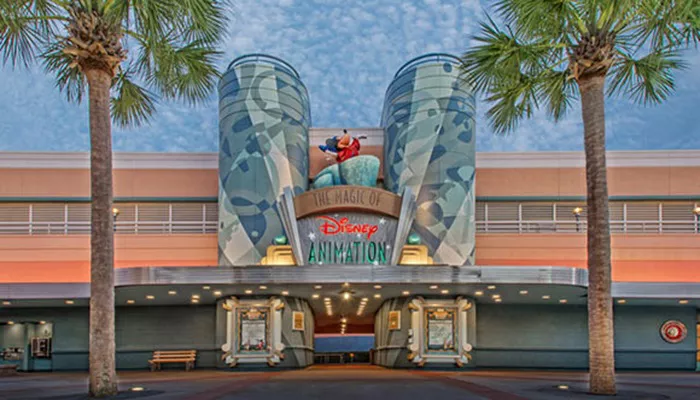Walt Disney Animation Studios (WDAS) is one of the most iconic and influential animation companies in the world. Founded in 1923 by Walt Disney and Roy O. Disney, it has played a central role in the evolution of animated filmmaking. As a division of The Walt Disney Company, WDAS has created some of the most beloved and successful animated films of all time.
Disney Animation Studios is renowned for its innovation, storytelling, and artistic excellence. With a legacy that spans over a century, the studio has not only helped define the animation industry but has also shaped the global cultural landscape through its films and characters.
The Founding of Disney Animation Studios
Walt Disney Animation Studios began as the Disney Brothers Cartoon Studio. Its first significant success was the creation of Mickey Mouse in 1928, followed by the groundbreaking release of Steamboat Willie, one of the first synchronized sound cartoons. This success marked the start of the studio’s influential journey.
In 1937, WDAS released Snow White and the Seven Dwarfs, the first full-length cel-animated feature in motion picture history. The film was a critical and commercial triumph, setting new standards for animation and proving that animated films could be both profitable and artistically significant.
The Golden Age of Animation
The period between the 1930s and the 1950s is considered the Golden Age of Disney Animation. During this time, WDAS produced a string of timeless classics, including:
- Pinocchio (1940)
- Fantasia (1940)
- Dumbo (1941)
- Bambi (1942)
- Cinderella (1950)
- Peter Pan (1953)
These films showcased the studio’s growing mastery of animation techniques and its commitment to narrative depth. The combination of hand-drawn artistry, musical innovation, and emotional storytelling became Disney’s signature style.
The Transitional Era
From the late 1950s through the 1980s, Disney Animation experienced both successes and challenges. While films like The Jungle Book (1967) and The Aristocats (1970) found audiences, the studio faced increasing competition and changing audience preferences.
Following Walt Disney’s death in 1966, the studio entered a period of uncertainty. Although films like The Rescuers (1977) and The Fox and the Hound (1981) had moderate success, the lack of strong creative leadership led to a perceived decline in quality and innovation.
The Disney Renaissance
A remarkable revival occurred in the late 1980s and 1990s, known as the Disney Renaissance. This era was marked by a return to musical storytelling, rich animation, and critical acclaim. The period includes some of Disney’s most iconic films:
- The Little Mermaid (1989)
- Beauty and the Beast (1991)
- Aladdin (1992)
- The Lion King (1994)
- Pocahontas (1995)
- Hercules (1997)
- Mulan (1998)
- Tarzan (1999)
These films revitalized the brand and brought Disney Animation Studios back to the forefront of the entertainment industry. The success of this era was bolstered by talented animators, composers, and executives like Jeffrey Katzenberg and Howard Ashman.
The Digital Transformation
As the animation industry shifted toward computer-generated imagery (CGI), Disney faced new challenges. In the early 2000s, the studio released several traditionally animated films, such as Atlantis: The Lost Empire (2001) and Treasure Planet (2002), which did not perform well commercially.
The acquisition of Pixar Animation Studios in 2006 marked a turning point. With Pixar’s creative leadership and technology, Disney Animation embraced CGI. John Lasseter, a key figure at Pixar, became Chief Creative Officer of both Pixar and WDAS.
This transition led to a new wave of successful CGI films, including:
- Bolt (2008)
- Tangled (2010)
- Wreck-It Ralph (2012)
- Frozen (2013)
- Big Hero 6 (2014)
- Zootopia (2016)
- Moana (2016)
These films retained Disney’s narrative depth while utilizing cutting-edge animation technology, ushering in a new golden age.
Notable Achievements and Innovations
Walt Disney Animation Studios has continually pioneered new animation techniques. From the multi-plane camera used in Snow White to the advanced CGI of Frozen, innovation has been at the heart of Disney’s success.
In 1991, Beauty and the Beast became the first animated film nominated for the Academy Award for Best Picture. Frozen became a global cultural phenomenon, winning two Academy Awards and becoming the highest-grossing animated film at the time.
WDAS has also embraced diverse storytelling, with films like Encanto (2021) highlighting Latin American culture and Raya and the Last Dragon (2021) exploring Southeast Asian themes.
The Studio Today
Today, Walt Disney Animation Studios is headquartered in Burbank, California. It continues to produce feature films, shorts, and content for streaming platforms like Disney+.
Recent releases include:
- Raya and the Last Dragon (2021)
- Encanto (2021)
- Strange World (2022)
- Wish (2023)
The studio emphasizes collaboration, diversity, and innovation. It remains a central force in animation, adapting to changing technologies and audience expectations while preserving the spirit of Walt Disney’s original vision.
The Legacy of Disney Animation Studios
The influence of Disney Animation Studios is immeasurable. Its films have shaped childhoods, influenced generations of animators, and set global standards for animated storytelling. Characters like Mickey Mouse, Elsa, Simba, and Moana are cultural icons.
The studio’s commitment to storytelling, innovation, and artistic excellence ensures that it will remain a leader in animation for generations to come.
Conclusion
Walt Disney Animation Studios is not just a film studio; it is a cornerstone of modern animation and storytelling. With a legacy that bridges hand-drawn classics and CGI marvels, it continues to enchant audiences around the world.
As the industry evolves, Disney Animation Studios remains a beacon of creativity, innovation, and emotional resonance. Its history is a testament to the power of imagination and the enduring magic of animated film.

